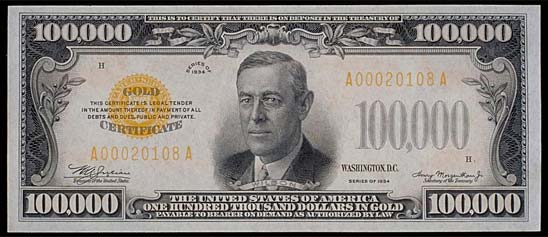One (1) 50 dollar coin, patternUnited States, 1877Obverse Image: Left-facing Liberty wearing a coronet. 13 stars.Obversre Text: LIBERTY / 1877Reverse Image: A modified heraldic eagle with a shield over chest, holding a double scroll, clutching arrows and branch.
- Description (Brief)
-
One (1) 50 dollar coin, pattern
-
United States, 1877
-
Obverse Image: Left-facing Liberty wearing a coronet. 13 stars.
-
Obversre Text: LIBERTY / 1877
-
Reverse Image: A modified heraldic eagle with a shield over chest, holding a double scroll, clutching arrows and branch. Rays and stars above eagle.
-
Reverse Text: UNITED STATES OF AMERICA / FIFTY DOLLARS / IN GOD WE TRUST / E PLURIBUS UNUM
- Description
-
Some twenty years after the private sector had abandoned the idea of a fifty-dollar gold piece in the mid-1850s, the Philadelphia Mint considered the possibility of a federal coin of this denomination. There was even talk of a "union," or hundred-dollar coin, and a drawing or two has survived to suggest what the Mint had in mind. But in the end, no such coin was ever produced.
-
The project went a bit farther in the case of the "half-union." Dies were prepared, the work of William Barber (father of the eventual Mint Chief Engraver Charles E. Barber).
-
Barber's obverse and reverse designs look vaguely akin to Longacre's work for the double eagle. A few patterns were struck in copper and two in gold; the latter share a reverse die but each has a slightly different obverse die. The project was abandoned soon afterwards, as it became apparent that the new coin simply wasn't needed.
- date made
-
1877
- maker
-
U.S. Mint
- designer
-
Barber, William
- ID Number
-
1986.0836.0059
- accession number
-
1986.0836
- catalog number
-
1986.0836.0059
